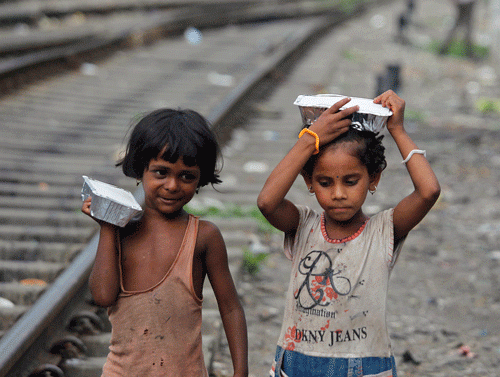Half of the global wasting burden is in India. National studies show that the prevalence of wasting in India has not decreased in the last decade, despite a reduction in other malnutrition indicators. Severe wasting among children under five years remains a major concern.
It is essential to diagnose severe wasting, also termed as Severe Acute Malnutrition (SAM), in the early stages of the condition. In addition to increased chances of illnesses and death, these children often suffer from low immunity and are at the risk of developmental delays.
Presently, treatment for SAM is primarily provided at the facility level, that is, in hospitals and malnutrition treatment centres. However, this approach comes with its own set of challenges. The problem is that caregivers, particularly mothers, are often not able to leave their work and other children at home to attend their sick child at the inpatient facility for an extended period. At the same time, these centres are highly capital intensive and so unutilised capacity does not augur well. A facility-based approach is nevertheless needed to manage children with medical complications. However, it is possible to address uncomplicated SAM cases at the community level through the approach of Community-based Management of Acute Malnutrition (CMAM). CMAM is currently not widespread in India. A feasible model of care based on CMAM can be an excellent weapon in the battle against SAM.
Having implemented the program in select geographies in Jharkhand, the CMAM model is already saving lives. One such story is that of Leela and Ramesh who live in the Gendimundi village of Khuntpani Block, Jharkhand with their four children, and Munni is the youngest of them all, at 22 months. The mother is the breadwinner of the family and works as a labourer in brickworks, while the father is unemployed. Lack of care at home resulted in drastic weight loss in their youngest child, Munni. The family was a beneficiary of the Antodaya Anna Yojana scheme, which qualified them for 35 kg of rice every month, but rice alone does not contain all the required nutrients a growing child needs.
It was during a house-to-house screening by the Anganwadi Worker (AWW), Munni was diagnosed as suffering from SAM; this was later confirmed by an ANM during her visit to the Village Health, Sanitation and Nutrition Day (VHSND) for a final assessment. Once her nutrition status was confirmed as SAM and it was ascertained that she had no medical complications, she was enrolled in the CMAM programme. As part of the programme, Munni began to receive adequate nutritional supplements and medical attention, and counselling was provided to her mother on her condition and the actions to be taken if it deteriorated. Leela was subsequently visited by the AWW to counsel the family on hand washing and personal hygiene practices and to check if the child was eating properly. Meanwhile, Munni’s health began to get better and within eight weeks, she had recovered.
Initiatives like this by the Government of Jharkhand, along with the concerted efforts by the Anganwadi Workers (AWW), Auxiliary Nurse Midwives (ANM) in a community-based approach helped Munni fight the battle against SAM. To continue her recovery, Leela also feeds Munni on the food provided by the AWC as a take-home ration under the supplementary nutrition programme.
Munni’s story demonstrates the challenges that can result in children becoming malnourished. Her mother was unable to seek inpatient treatment for Munni as she was working, and this is when the home-based approach allowed her to be treated with minimal disruption to her family life and income earning capabilities.
Launch of POSHAN Abhiyaan by the Government of India in 2018 signals its strong commitment to accelerate efforts to improve the nutritional status of children. Comprehensive approaches, both preventive and curative, to tackle malnutrition including CMAM, need to be adopted in a concerted way. These need to be rapidly scaled up, which could help build synergy on the actions against SAM and provide sustainable solutions that focus on both prevention and treatment.
If this intervention must achieve impact, then implementation bottlenecks need to be systematically addressed so that such high-impact nutrition interventions are delivered with increased coverage and improved quality. This will allow thousands of lives to be saved, just like Munni.
(The writer is Director General, State Nutrition Mission, Jharkhand)
